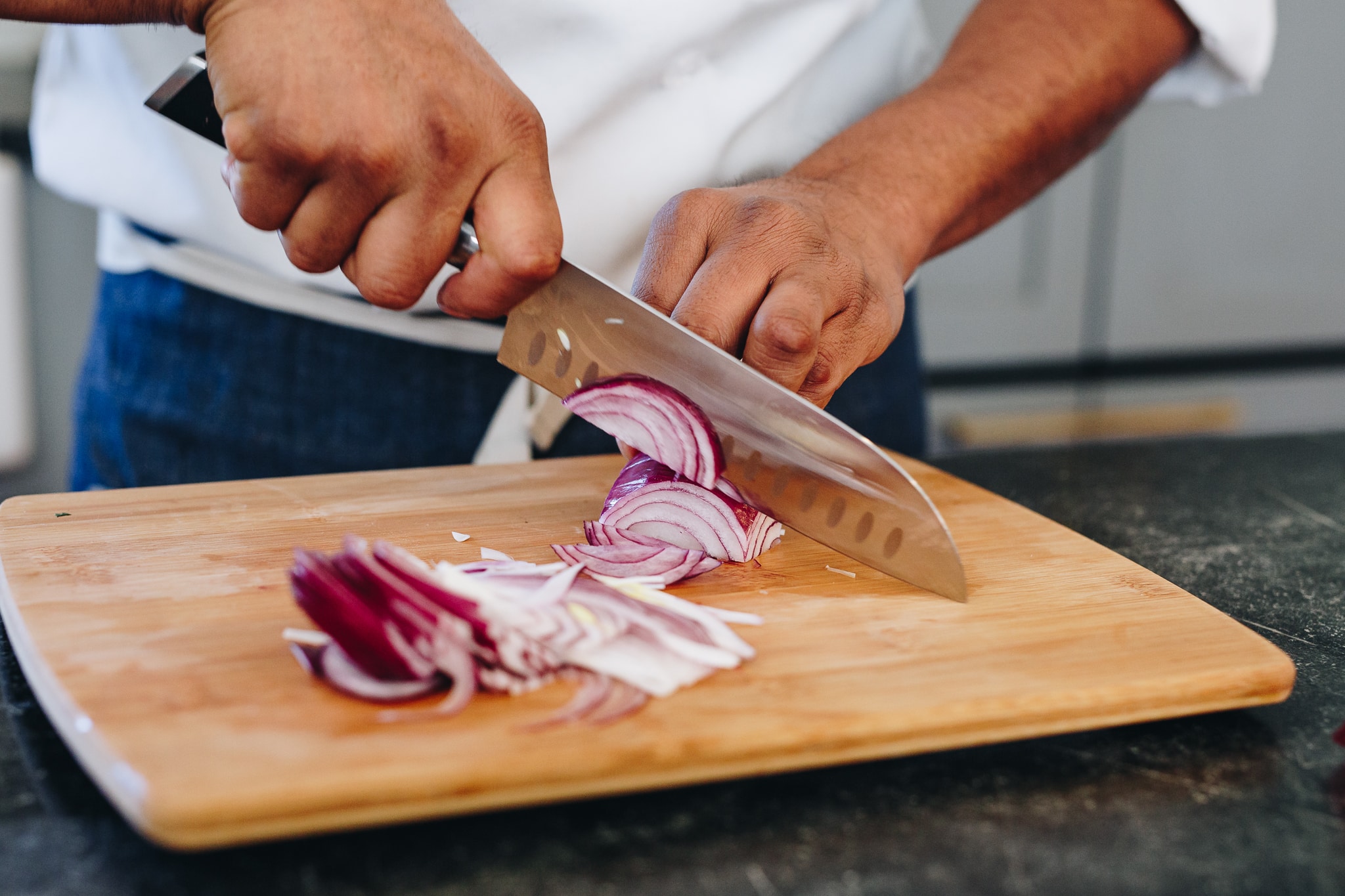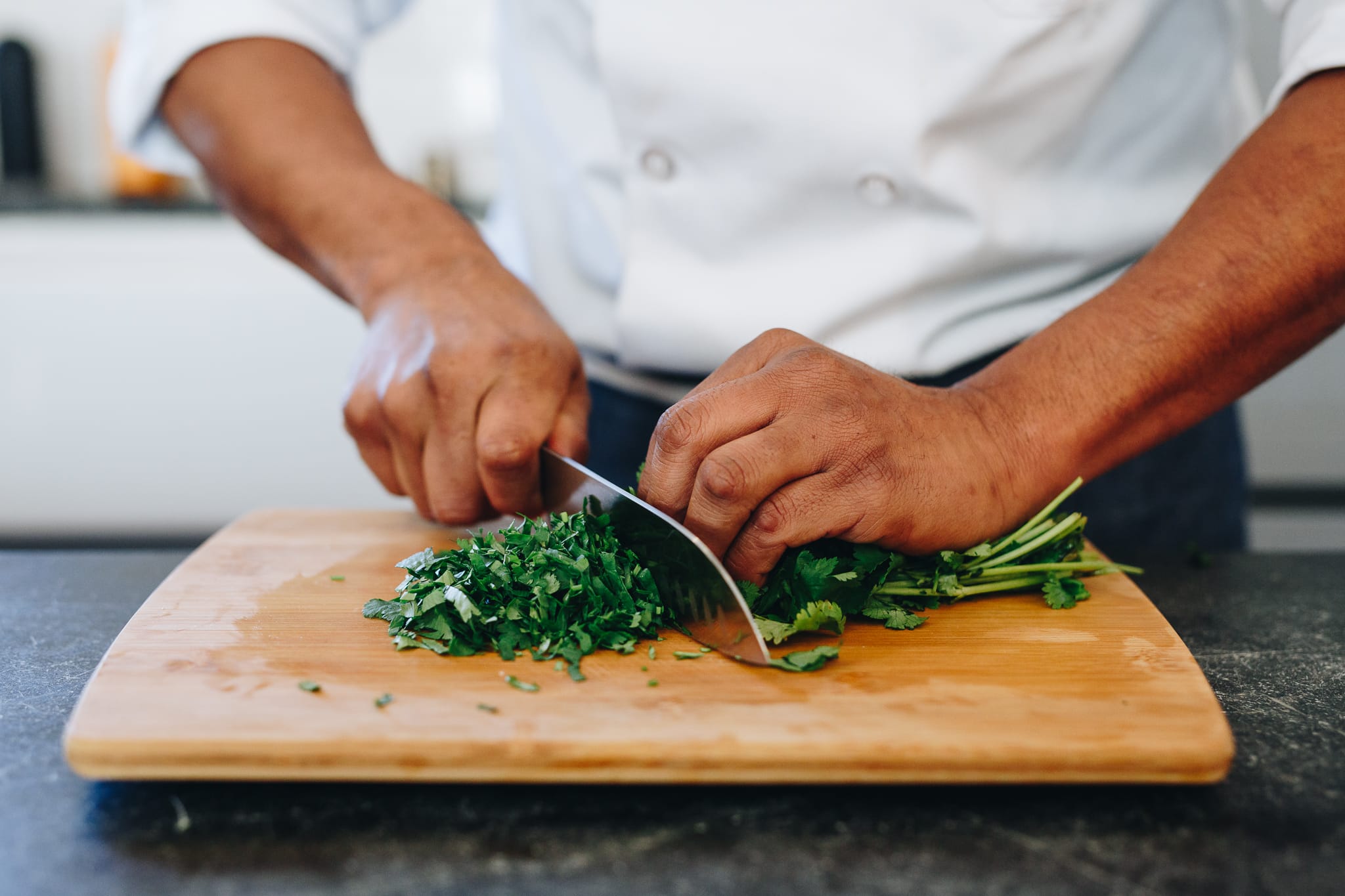This Coconut Mango Ceviche is a staff favorite—summer is in full swing, so it seems fitting to share this beloved recipe! At the heart of this dish is a special alchemy that happens when you marinate young coconut meat with kombu overnight. Unfamiliar with these ingredients? No worries, we’ll explain everything step by step so you can master the techniques.
Using Kombu Magic
Kombu is the lowkey foundation for much of Japanese cuisine. A kind of large seaweed, dried kombu is used to make Kombu Dashi, a Japanese broth that functions as a base for miso soup and other Japanese staples. The magic of Kombu is that its flavor is mild—slightly salty, slightly sweet—yet it brings out the umami, or savoriness, of any food it’s combined with. It contains lots of glutamic acid, the amino acid that is responsible for the umami flavor or effect.
Another beautiful thing about the glutamic acid in kombu is that it helps soften and tenderize foods. Marinating young coconut meat with kombu overnight gives coconut meat a great umami feel while softening it. That’s the first thing you have to do to make this spectacular vegan ceviche: combine bite-sized pieces of young coconut meat with one leaf of kombu in a bowl of water and leave it to marinate in the refrigerator overnight (at least eight hours).

You can find young coconut meat in most health food, specialty food, or Asian markets—it often comes frozen, so just defrost your packet before combining it with the water and kombu. The young coconut meat serves as the “fish” in this ceviche recipe, and lends a wonderful chewy fullness to the dish.
Marinating the Ceviche
At its heart, ceviche is about marinating ingredients in and acidic fruit juice, usually lime or lemon juice. Traditionally this is done with raw fish, and the acid in the juice serves to “cook” or cure the fish. In this plant-based version we use young coconut instead of fish, but the basic marinating concept stays the same. This ceviche also includes a variety of vegetables, fruits and herbs that give it a gorgeous color and help make a main dish that stands on its own.

Start by slicing red onion and red bell pepper into thin strips (julienne) with a sharp knife. Thin slicing for both red onion and red bell pepper helps bring out their inherent sweetness and mellows their sharpness. Next, do a rough chop of cucumbers and mango. Mangos can be eaten at various stages of ripeness—for this dish we like to use mangos that are not overly ripe, so that they are still a little bit firm and have a beautiful balance of sweetness and tartness. You can check a mango’s ripeness by giving it a gentle squeeze. It should give a little, but not too much—if it feels squishy then it is too ripe and will be hard to cut into chunks. We like to use a knife to peel the mango then slice off big chunks around the pit, which we dice up into smaller pieces.
Next, chop up your cilantro. A lot of people spend time taking the leaves off of the stems, but the cilantro stems are actually the most fragrant part of the plant. So we always chop up our cilantro together with stems and all—more convenient and more flavorful!

Now you’re ready to combine all the ingredients and begin marinating. Remove the kombu, which won’t go into the ceviche. We usually don’t keep the kombu—though leftover kombu can be used to make relish or stock. Combine the coconut meat, red bell peppers, red onions, cucumbers, cilantro, mango, lemon and lime juice, hot sauce, Tajín, chili powder and salt. We use both lemon and lime juice—lemons provide a powerful acidity while limes lend a more complex flavor profile.

We use a combination of hot sauce, Tajín and chili powder to spice, but this is mostly a matter of taste. A mild hot sauce (like Tapatío) is traditional in Mexico for spicing ceviche and is terrific in this dish because it provides a little extra juiciness without being too spicy. Tajín is the brand name for a mild blend of chili, dried lime and salt that is the preferred spice in Mexico to pair with fresh fruit. If you’ve ever had the good fortune of buying fruit from a Mexican-style fruit stand, then you are familiar with this seasoning. It goes perfectly with the mango, cucumber and coconut in this dish. Finally, if you prefer things on the spicy side, you can add a chili powder (like cayenne) to boost the heat of the ceviche.
Once you’ve got all these ingredients combined and stirred together, cover the bowl and let it sit in the refrigerator to marinate for at least an hour.
Making the Mango Chipotle Aioli
It’s all about the special sauce! This scrumptious aioli combines the smoky depth of chipotle peppers with the sweetness and tang of mangos, and complements the ceviche perfectly. We use vegan mayonnaise as a base—not only because this is a plant-based recipe, but truth be told, we find we like vegan mayo more than the traditional kind. In our experience even people who aren’t super fond of traditional mayo can get into the egg-less kind. It gives the aioli a tangy, creamy base and glues the whole thing together.

Chipotle means “smoked chili” in Nahuatl, and it’s usually made from fully ripened jalapeño peppers, that are then dried and wood-smoked until they are a reddish-brown color. They add a wonderful earthy, smoky heat to this aioli. We usually use the canned variety that you’ll see sold as “chipotle in adobo sauce.” You can use the pepper and adobo sauce together.
To make the aioli, simply combine the vegan mayo, chipotle puree, lemon juice, salt and mango puree—then blend using a hand blender or food processor. This sauce has all the flavors: tangy, smoky, slightly sweet, with the perfect amount of heat. You can use this aioli on all sorts of other dishes—it’s ideal for sandwiches, veggie burgers, wraps… you get the idea!
Serving the Ceviche
Once the ceviche has marinated for at least and hour and the aioli is prepared, you’re ready to serve. First taste the ceviche and make sure that it’s properly seasoned. Add salt if it needs, or a squeeze of lemon juice if you’re wanting a sharper citrus kick. The ceviche is best served cold, so if you’re not going to serve it right away, return it to the fridge.

When we serve it, we like to “fan-slice” our avocados and add them to the top of the ceviche. Everyone has their own way of cutting avocados, but our preferred method is to first cut the avocado into quarters and remove the pit. With the quartered avocados, it’s easy to peel the peel right off. To fan-slice them, you take each quarter and make several cuts, taking care not to cut all the way through. Then fan the avocado out along the cut side.
All that’s left to do is drizzle the Mango Chipotle Aioli on top and enjoy! Serve together with your favorite tortilla chips or tostadas!

Coconut Mango Ceviche (Vegan)
Ingredients
Main Recipe
- 2 cups young coconut meat, cut into bite size pieces
- 1 leaf kombu (seaweed)
- 2 cups red bell pepper, julienned
- ¾ cup red onion, julienned
- ¾ cup cucumber, chopped
- ½ cup cilantro, chopped
- 2 tbs Tapatío or preferred hot sauce
- 1 avocado, fan sliced
- 1 tbs lemon juice
- 1 tbs lime juice
- 1 cup diced mango
- 1 tbs Tajín seasoning
- 1 tsp chili powder
- Salt to taste
Mango Chipotle Aioli
- 1 cup vegan mayonnaise
- 1 tbs chipotle in adobo sauce
- 1 tbs lemon juice
- ¼ tsp salt
- ¾ cup mango puree
Instructions
- In a bowl, combine the coconut meat and kombu to marinate overnight (at least 8 hours)
- Remove kombu and add red bell peppers, red onions, cucumbers, cilantro, mango, lemon and lime juice, hot sauce, Tajin, chili powder, and salt.
- Cover and let the ceviche marinate in the refrigerator for an hour.
- Adjust flavor by adding citrus and salt to taste.
- When you are ready to serve the ceviche, add the avocado fan for garnish.
- Drizzle Mango Chipotle Aioli on top.
- Serve cold.
- ENJOY!